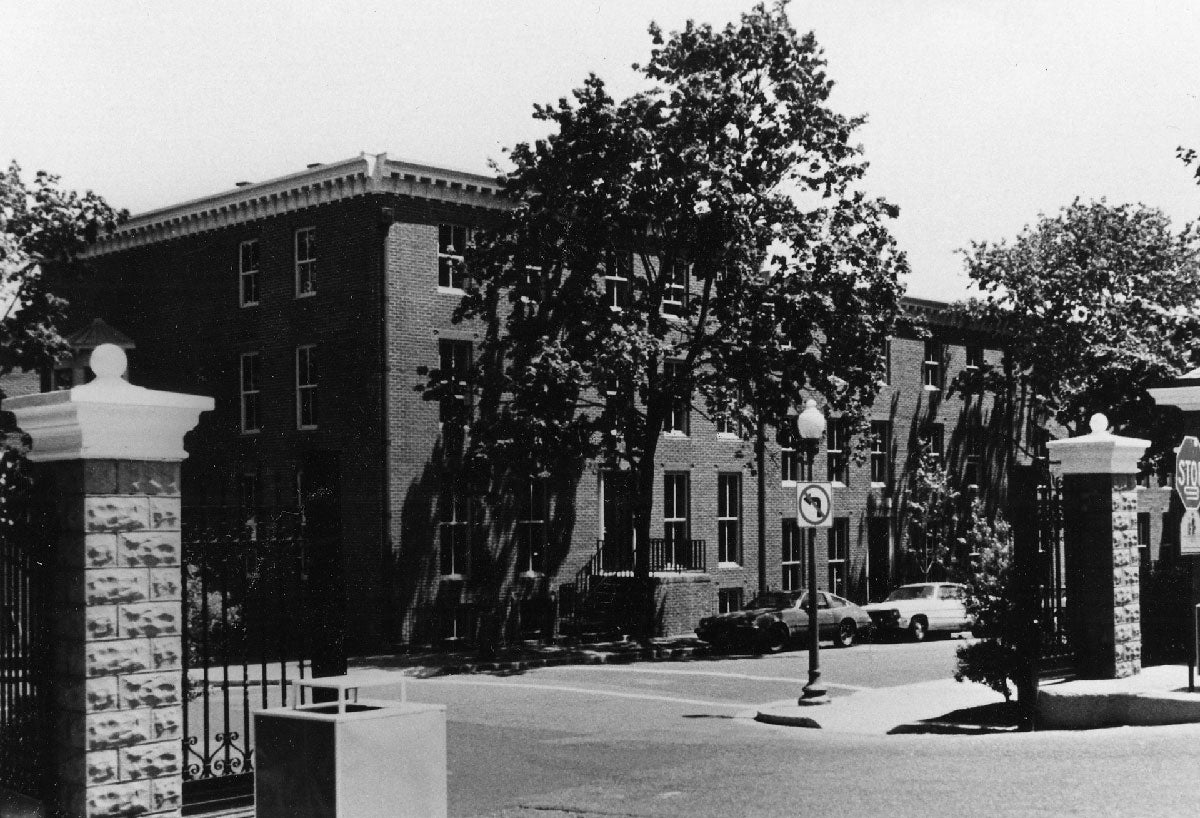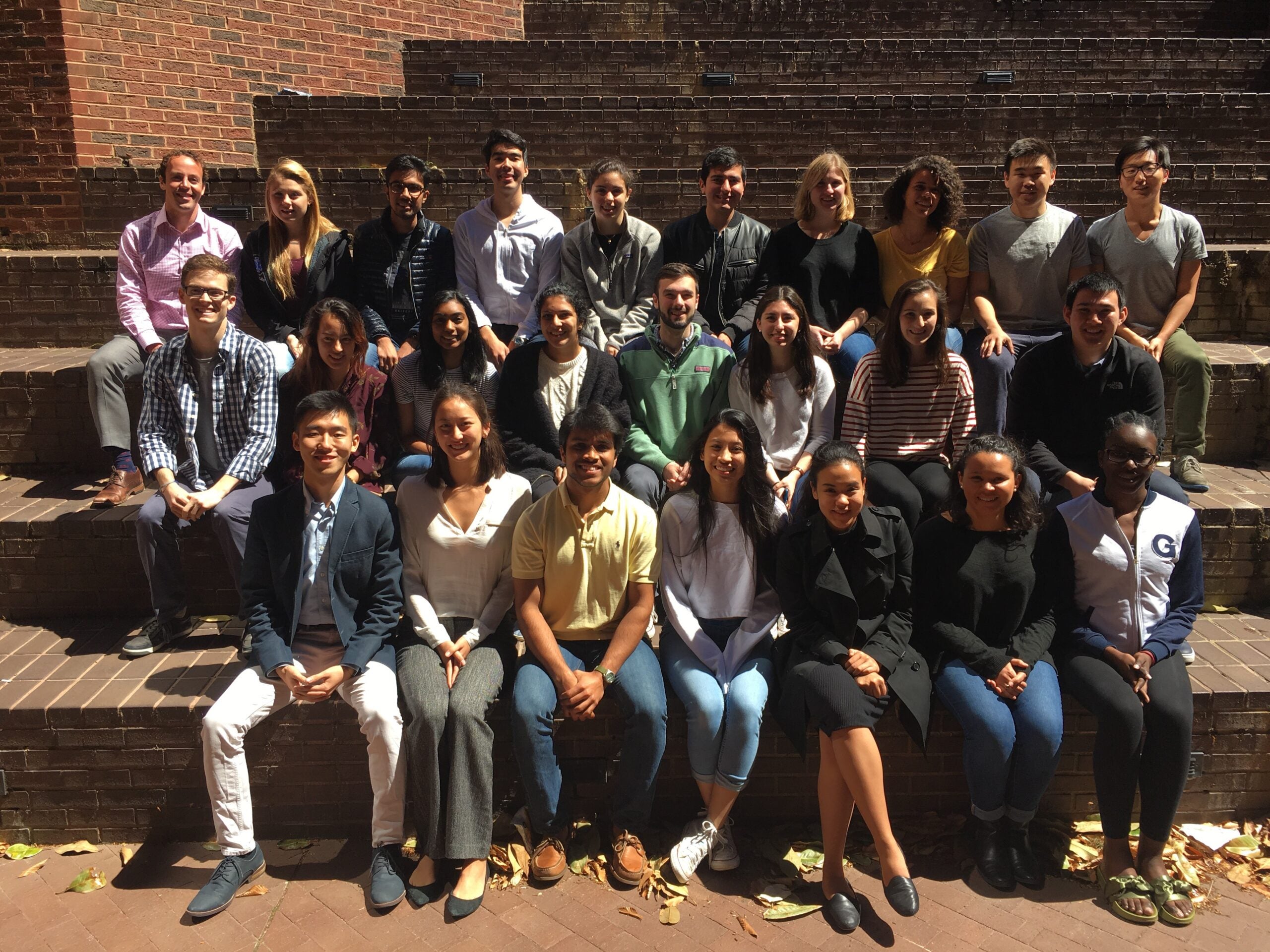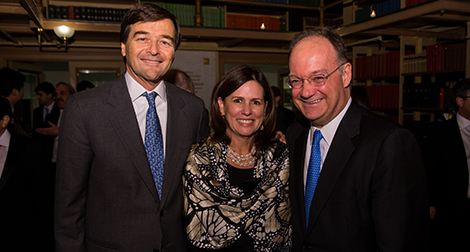A Decade of Impact: How one family set their sights on social impact with ‘philanthropy, upside down’
This is Part I of a three-part series exploring a decade of impact at the Beeck Center. Read Part II and Part III.
Over a period of six days in April 2010, Eyjafjallajokull—an ice cap-covered volcano in Iceland—erupted for the first time in nearly 200 years, blanketing large swaths of Europe in an impenetrable layer of ash and debris.
At the time, Alberto Beeck and his brother-in-law, Carl Muñana, were visiting Oxford University for the Skoll World Forum on Social Entrepreneurship, hoping to glean information for a passion project Olga María and Alberto Beeck—with the help of Carl—had been researching for the better part of two years. As the volcanic ash ground all air traffic across northern Europe to a halt, Alberto and Carl hunkered down in London with Olga María dialed in on speakerphone and decided to put pen to paper on the idea they hoped would help shape the emerging field of social impact.
“It was philanthropy, upside down”
Alberto Beeck
“Our key question was, ‘How can we maximize the impact we can have on society?’” Alberto said. “We were happy to experiment and try different initiatives to get to our goal … It was philanthropy, upside down.”
What the trio initially proposed was a university-based center that would provide “undergraduates, graduate students, practitioners, and faculty with the opportunities to learn about and engage with all aspects of social impact and innovation.” And, unlike many centers situated at academic institutions, this organization would not be tied to a particular school within the university, nor would its scope be limited to a specific subject, faculty member, or theory of change. By design, it would break down academic silos, experiment with ideas, and—most importantly—train the next generation of changemakers to have the greatest impact on the greatest number of people.
“Our premise was … let’s let the center be a place that’s alive and can transform over time to meet the goals that we think are important and can have a lasting impact on the world,” Carl said.
Building a Foundation of Impact
The pull toward impact was not a new one for either the Beecks or Carl. Alberto came from a family of social entrepreneurs and, in the mid 2000s, he and Olga María set their sights squarely on philanthropy.
Alberto started his involvement in social impact by joining Ashoka’s support network, as well as the board of an organization that gave students education grants in return for a portion of their future earnings. He also conceptualized and launched Misión Impacto, a reality television show that highlighted the work of social impact leaders in Colombia.
After observing these initiatives from the inside out, the Beecks saw the lightning fast pace at which the field of social impact and entrepreneurship was growing and changing, with no structured efforts to train and develop the talent pool in sight.
“There’s a lot of myth around social entrepreneurship,” Alberto said. “But, at its core, you have to really be an entrepreneur … You have to understand how to achieve sustainability and maximize impact.”
They turned to Carl, who had been doing his own research and work in social impact since leaving his investment banking career in the late 90s. He had been inspired at a young age through his service in the Peace Corps, where he worked on health and sanitation issues in Sierra Leone.
“That experience was, in its own way, transformative, as it is for many people,” Carl said. “So you might say it’s in my DNA and … those years after 1999 were very much like a big experiment in different areas and subsections of the ecosystem.”
After nearly three years of attending conference after conference—meeting with experts from social impact organizations like Ashoka, Endeavor, and the Aspen Institute, as well as social entrepreneurs and academic minds from Oxford, Stanford, and other institutions—and days spent distilling their ideas down to a cohesive, targeted approach, the only thing left to do was identify and secure a home for their ideas.
The trio debated whether to create an independent center, but quickly realized that being based at a university would connect them to future leaders (students) and the brightest minds (faculty and practitioners), which would further amplify their reach and impact.
“Selecting Georgetown was the easiest decision for us,” Olga María said. “It has values at its core and attracts people that want to impact society and serve others. Also, there was a deep personal connection that played an important role in the decision.”
Growing a Legacy of Innovation
Olga María always knew that she wanted to study and experience the world in whatever ways she could.
Enrolling in Georgetown University helped her achieve that goal. She immersed herself in courses on Latin America, South and Southeast Asia, and the Middle East, and added several more languages to the three she already spoke.

She went on to lead a successful career in finance before starting her family with Alberto, never forgetting the foundation of curiosity, exploration, and generosity she had built in her college years. Olga María spent the next few decades deepening her connection to Georgetown through her service on the Board of Advisors for the School of Foreign Service, the Board of Regents, and various other initiatives. Alberto followed suit, co-founding Georgetown’s Latin American Board and serving as a member of the Georgetown Board of Trustees.
Then, one day in 2014, their name became a part of the university in a new and even more enduring way when a sign for “the Beeck Center for Social Impact + Innovation” went up outside Georgetown’s Intercultural Center. What started as a proposal written to Georgetown President John DeGioia, Provost Robert Groves, and Vice President for Advancement Bartley Moore three years earlier had become a tangible center in the heart of Georgetown’s Main Campus, promising to contribute to the field of social impact.
As the ultimate testament to the longevity of their commitment—in addition to their generous $10 million founding gift—the Beecks gave their name to the center.
“It really commits you to a completely different level,” Alberto said. “It’s not just writing a check … It’s really a lifetime commitment because it’s your reputation. It’s your name.”
For Olga María, even before the Beeck Center officially opened on campus, her primary ambition was for the organization to give students a taste of what she had valued most about her time as a Georgetown student. To her, the center had to be a place that, above all else, upheld the university’s commitment to serving others.
“I was able to see and experience so many things [abroad],” she said. “… It was so important to see how other people live and learn how to become a global citizen and contribute to the betterment of society as a whole.”
It is from that principle that the Beeck Center’s first program, GU Impacts, was born. The fellowship guided students through an immersive experience centered around a 10-week independent summer project with one of the Beeck Center’s social impact partners across the globe.
“It was about taking students out of the traditional classroom setting and connecting them with communities and causes that were working toward meaningful, sustainable change,” Olga Maria said.
In total, 155 students worked in teams with local organizations, advancing their efforts toward sustainable change. GU Impacts partners were nonprofits, NGOs, and corporations whose goal was to show students positive social impact in any sector.
“The independence of my project … has instilled in me a bigger sense of pride in my work,” said Ziyue Zhang, a GU Impacts alum. “Having now experienced challenges in the classroom and in experiential learning, it has expanded my academic repertoire for a more diverse set of situations.”

To Olga María, Alberto, and Carl, GU Impacts was not only an ideal flagship program for the center, but one that felt emblematic of Georgetown’s mission on the whole. In the university leadership—President DeGioia, Provost Groves, and Vice President Moore—the Beecks and Carl had found stalwart supporters of their experimental ideas and “unusual” approach, and were instrumental in providing “navigational skills in our journey with the university.”
“Values drive Georgetown,” Alberto said. “And that made a big difference in terms of how we related to the university, because we were aligned on our core principles from the start.”
With one program already underway, the founders next focused their energy on searching for the Beeck Center’s inaugural leader. The group agreed that this person needed to be able to harness the “entrepreneurial spirit” under which the center had been conceptualized, and marry a “start-up mentality” with the social impact motivations of the founders and the service orientation of the university. They knew one thing for certain: whoever stepped into the role would be stepping into something entirely new, with immense untapped potential for the future.
“[The Beeck Center] came at the right moment … where the entire environment was ready for rethinking how young people learn,” Provost Groves said. “Now interdisciplinary problem solving activity [at Georgetown] is just booming … I’m willing to say [the Beeck Center] was a causal factor in more traditional academic programs rethinking how they teach.”

_____________________________________________
Stay tuned for Part II of this three-part series exploring a decade of impact at the Beeck Center.